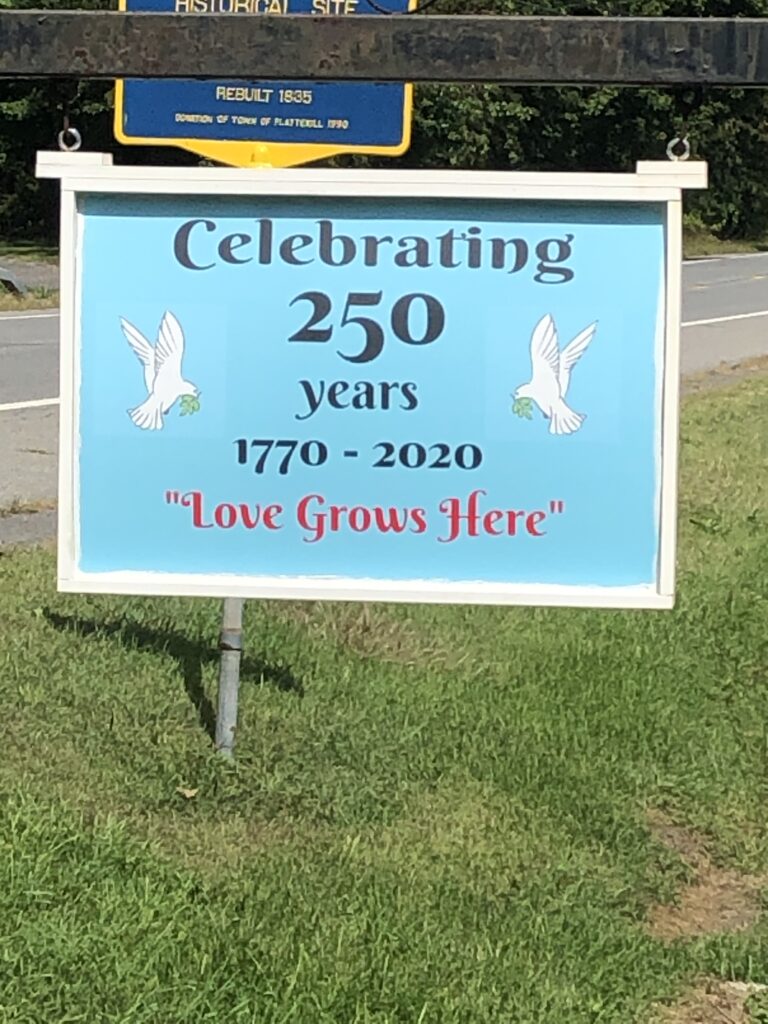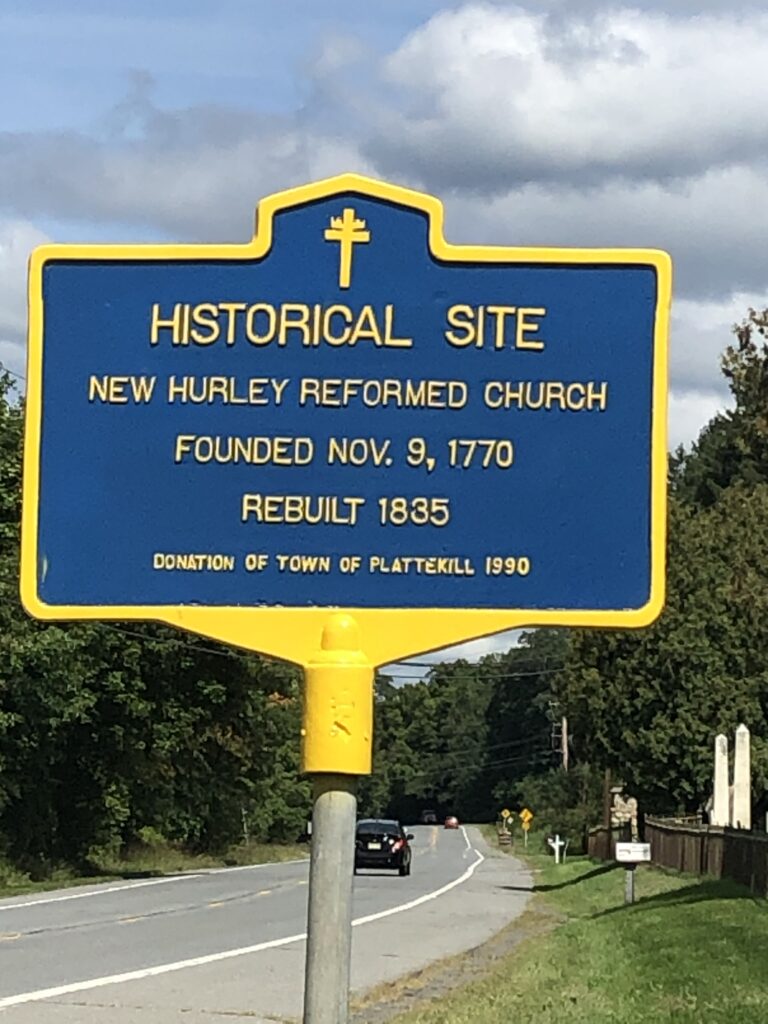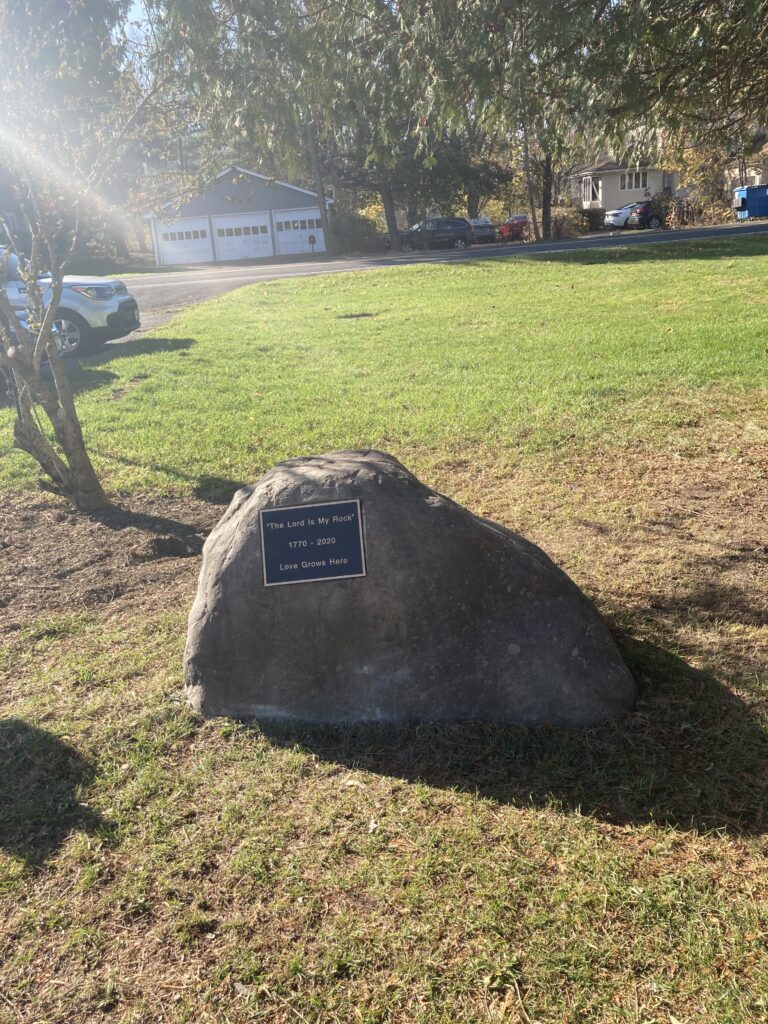Before 1770
On September 12, 1609 Henry Hudson, in search of a water route that would link Europe with China (known more commonly as the northwest passage) and sponsored by the Dutch East India Company while piloting a ship named the Half Moon, came upon what he described as a fine a river as can be found. We now know this river as the Hudson River and Henry’s visit introduced the Dutch Reformed Church to a New World. Colonization of New Netherlands began almost immediately and, by 1624, a colony of approximately 30 families settled up the river at Fort Orange or present day Albany. A second colony known as New Amsterdam, (now present-day New York) also formed at the mouth of the river on Manhattan Island. In the absence of trained ministers, assistants known as comforters of the sick were used to visit the sick and the dying. Over time, their duties expanded to include the reading of prayers, passages of the Bible, the delivery of sermons, missionary work among the native Indian population and education of the colony’s young in faith. The first Reformed Protestant Dutch Church was formally organized on April 10, 1628 in New Amsterdam. The first Reformed Protestant Dutch Church in Fort Orange was organized 1n 1642. As the Dutch spread out from both Albany (Fort Orange) and New York (New Amsterdam) the church moved with them. Churches eventually developed in Roundout (present-day Kingston) in 1660, then in New Paltz in 1717. By 1736, numerous farmers had settled in the valley below the Shawangunk Mountain ridge. These settlers worshiped in each other’s homes for quite some time, but eventually, in 1753, the Shawangunk Reformed Church was organized to meet the worship needs of the valley’s people.
1770 – 1869
Our story begins when the area of New Hurley was only sparsely settled, 8 years before the first shots were fired in the Revolutionary War in September of 1767. Up until that time, the settlers in New Hurley worshiped at the Shawangunk Reformed Church which was located on the other side of the Wallkill River. This was no real problem, until the bridge that linked the two sides of the river washed away leaving the souls of the faithful in the New Hurley area unnourished. Seeking for resolve, the farmers on the New Hurley side of the river approached the Shawangunk Consistory (or leading board) with the idea of building another church on their side of the river. After the Shawangunk Consistory studied the request, it flatly denied it on the grounds “there being danger of causing scandalous reproach and defection which might prove irreparable”. In short, they seem to have been very concerned that a new church start would severely drain their membership and resources. They urged the brothers and sisters of the New Hurley area to be, ” patiently content with the present divine arrangement.” The brothers and sisters in the New Hurley area did not share the Shawangunk consistory’s perception and, 2 years later, made a second request to which the Shawangunk consistory did not reply. Not knowing what else to do, the people of New Hurley appealed to the agency that superintends a group of local churches in the same general area or region known as the Classis, (an old dutch nautical term which means fleet). A committee of the Classis was appointed to investigate the possibility of granting permission for this new church to start and, after careful deliberation, concluded that “the aforesaid community in a friendly manner be permitted to accomplish their desire to be constituted into a church” with the condition that they locate their church away from the Walkill river. Consequently, the present location was chosen by a majority vote of the neighborhood. The exact date of organization was November 8, 1770. The land upon which the Church sits was purchased on December 21, 1773 from Denne Relyea for the sum of 5 shillings. That same winter, the trees that stood on the property were cut down to form the timbers that formed the foundation and frame erected the following summer. The building contained no stove or chimney. Heat was provided only by little footstoves owned and carried to church by individual members. In 1811, New Hurley’s first sanctuary was enlarged by an addition of twenty feet to what was the rear of the building, making it one of the few churches with a width being greater than its length. This renovation was almost destroyed the following year by fire when, on the occasion of Commander Perry’s victory against the British on Lake Erie, members of the church were a bit zealous and careless in their celebration. No membership role exists for New Hurley in its early years of life, perhaps mainly because it had no resident pastor. In the years between its organization and the building of the first sanctuary, worship services were occasional and made possible only through visits made by pastors from Kingston and elsewhere. However, at the close of 1775, the Protestant Dutch Reformed Churches of New Paltz and New Hurley united in calling the Rev. Stephen Goetschius, a nephew of the Rev. John Goetschius, of Shawangunk. Goetschius spoke very little English and liked to preach in Dutch instead. In 1778 the 2 churches again united in buying their first home or parsonage for their minister. As the 18th century began to close, there can be found in the development of New Hurley and New Paltz one of the area’s first religious question and challenge. In which language should the gospel be preached, Dutch, as in the homeland, or the increasingly more popular English. It was decided that on every alternate Sabbath, each church should have a Dutch sermon in the morning followed by a recess of fifteen minutes, after which an English sermon should be preached. The Church’s second full time Pastor, Rev. J. H. Meyer being bi-lingual was able to meet this challenge. However, much needed Pastor Meyer left after only 3 years making his pastorate the shortest in New Hurley’s firs 100 years of history. In 1817 the churches called the Rev. William R. Bogardus. He was the last minister to serve both churches. In 1828 Rev. Bogardus was called to take sole charge of the church in New Paltz. Shortly there after the congregation purchased land for its own parsonage for $1,125 in 1828. The Rev. F. H. Vanderveer was called as New Hurley’s first full time minister in April of 1829. It was during Vanderveer’s pastorate that the first parsonage was built for a cost somewhere between $4,000 and $5,000 dollars. Although by 1848 the church had seen 2 more pastors come and go it continued to grow, a fact made evident by the church’s report to the Classis where in it celebrated that some 85 additional names had been added to the roles. The last pastor to be called during the churches first 100 years of life was Rev. L.L. Comfort. He accepted a call to New Hurley in 1854 and saw the church through the dark days of the Civil war.
1871- 1969
The church celebrated its first hundred years of ministry under the leadership of Rev. Comfort, who for the celebration composed the Centennial Hymn. After a 17-year pastorate Comfort resigned due to health reasons. During the next 51 years no less than 8 pastors came and left the new Hurley congregation and no pastor served the church from the years of 1922 and 1926. These first 51 years may have been prosperous for many financially, which may be evidenced by the fact that from 1904 – 1906 the painted and stained glass memorial windows were added to the church. Nevertheless, they were also lean years for the souls of many who amid prosperity wandered away from the life of the church. Many churches nation wide were forced to close their doors. New Hurley Church too experienced a difficult time. By 1926 members of the church had become so few that the Classis of Orange’s Classical Missionary to the church called a meeting of the congregation in order to ascertain whether or not the church would remain open or close its doors. The vote was unanimously to remain open and in 1926 a call to the Rev. Arthur Van Arendonk was extended. Concern for the church and its ministry revived. The Christian endeavor was organized, the church which had fallen into disrepair was repainted the steeple, too, was repaired and both the sanctuary, parsonage were wired for electricity, a baptismal font was donated to the church and both the property and building were given to the church. The building located on the corner of Rt. 300 and Plains Rd (approximately 4 miles from the church) was used as New Hurley’s first church hall. Rev. Van Arendonk died while in service to the church in 1932. This renewed concern for the life of the church continued under the pastoral leadership of a young Rev. Vernon Negal. Weekday bible studies were held, a Daily Vacation bible school was organized, new hymnals were purchased and the parsonage which was by now in bad need of repair and too costly to heat using wood was torn down and another placed upon the same foundation. Although Nagel’s pastorate was relatively short the congregation’s enthusiasm for the Church and its ministry was not dampened. During the next pastorate, that of Rev. John Tysse, (1939 – 1955) the church continued to attend to the needs of its membership, community and world. A communicant’s class for training young people in faith was established for the first time. The people of New Hurley joined 6 other Reformed Churches to form Wallkill Valley Union Lenten Series which after 61 years still meets for evening Lenten services making it the longest continually running series in the Reformed Church. In 1945 the Good Cheer Committee was formed and focused its ministry on those in the Wallkill community who were sick or who had suffered loss. Worldwide needs were also given attention and the church gave liberally to the War Emergency fund established to relieve the suffering and homeless in Europe. The congregation also focused its attention on the future in which technology was playing an increasing greater roll. The old horse sheds located along the east wall of the sanctuary which were used not only to place carriages during worship but also to hold church bizarre were torn down and a parking lot of shale was put in its place. Likewise work began on the excavation and building of a furnace room beneath the sanctuary to replace the stoves that heated the sanctuary. Effort was also focused on the future. The membership of he church was growing and more space was needed than the current church hall could provide. Consequently, the old church hall was sold and a committee appointed to erect a new one adjacent 1949 adjacent to the church. It was completed in 1955. As the end of a second hundred years of history began to draw to a close the congregation found itself still riding on a wave of growth that had begun 4 decades earlier. During its Bicentennial year Rev. D. Reardon was called as pastor and the church set about renovating the interior of the sanctuary. The Church organ and choir, which for years had been located at the front of the sanctuary, was, in true Reformed tradition, moved to the loft. All the pews were removed, the floor refinished, a new ceiling installed, pews repainted and replaced. The task was monumental but due to the ingenuity and determination of the membership all the renovation plans were completed.
1971 – Present
Under construction.



